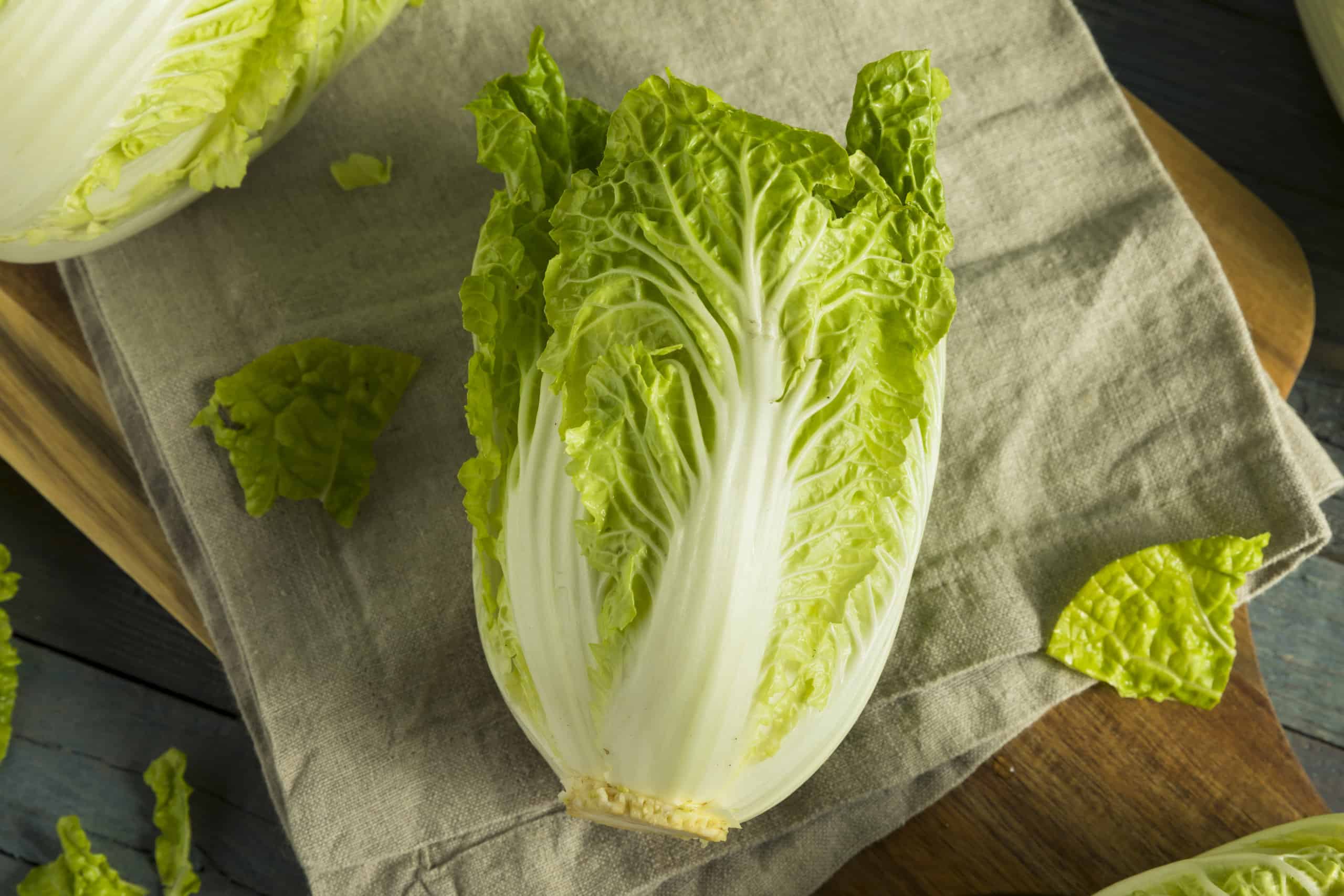It may surprise many that there’s a fascinating group of vegetables that start with the letter X – yes, X! Today, we’ll delve into and get to know these vegetables that start with X. But surprisingly, you may already be familiar with some of these vegetables. However, you probably know them with a different name – not one that starts with X. And on the other hand, you may have never even heard of the other vegetables on this list! So without further ado, let’s explore the 8 vegetables that start with X and expand your palate a bit.
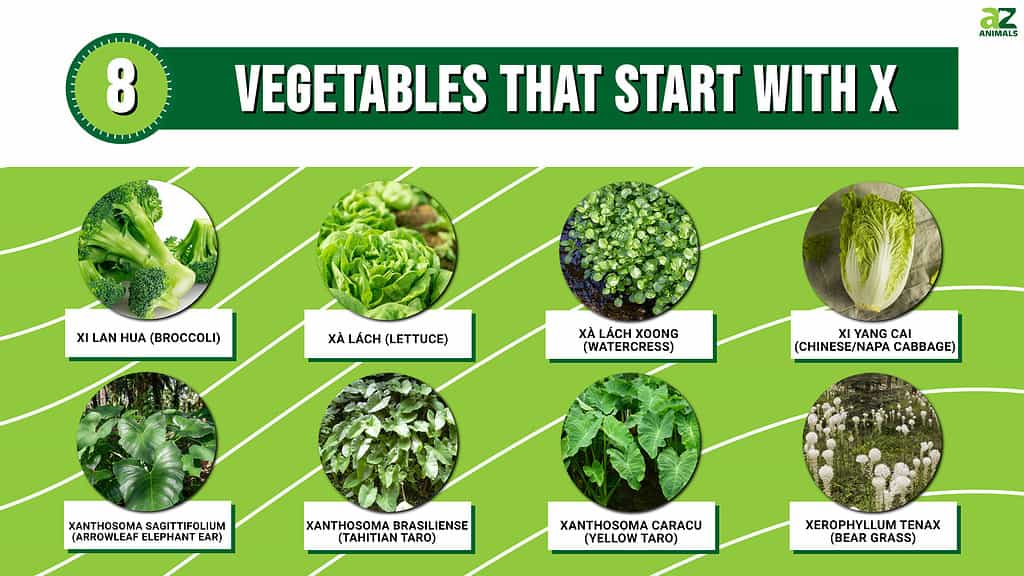
Xi Lan Hua (Brassica oleracea)

Surprisingly, a vegetable that starts with X is none other than xi lan hua, AKA broccoli.
©Valery121283/Shutterstock.com
Xi lan hua, more commonly known as broccoli in English, is a lush, green leafy vegetable. Xi lan hua is a vibrant, forest-green vegetable that visually resembles a small tree. Its intricate structure consists of a thick, edible stem that branches into a dense cluster of tiny, bud-like florets.
The texture of xi lan hua is crisp and firm when raw, becoming tender yet hearty when cooked. Its flavor profile exhibits a mild, earthy taste with hints of sweetness. This flavor becomes more pronounced when lightly steamed or roasted. You can further enhance the flavor with various seasonings or sauces, complementing its unique flavor.
You can eat xi lan hua in many ways: raw as part of a refreshing salad, steamed as a healthy side dish, roasted for a rich, caramelized flavor, or even pureed into soups. Its versatile nature and nutritional value make it popular in numerous cuisines worldwide. You can chop and add this veggie to stirfries, adding texture and a refreshing flavor. Or you can toss it into noodle dishes, contributing to a diverse medley of tastes and textures.
Xà Lách (Lactuca sativa)
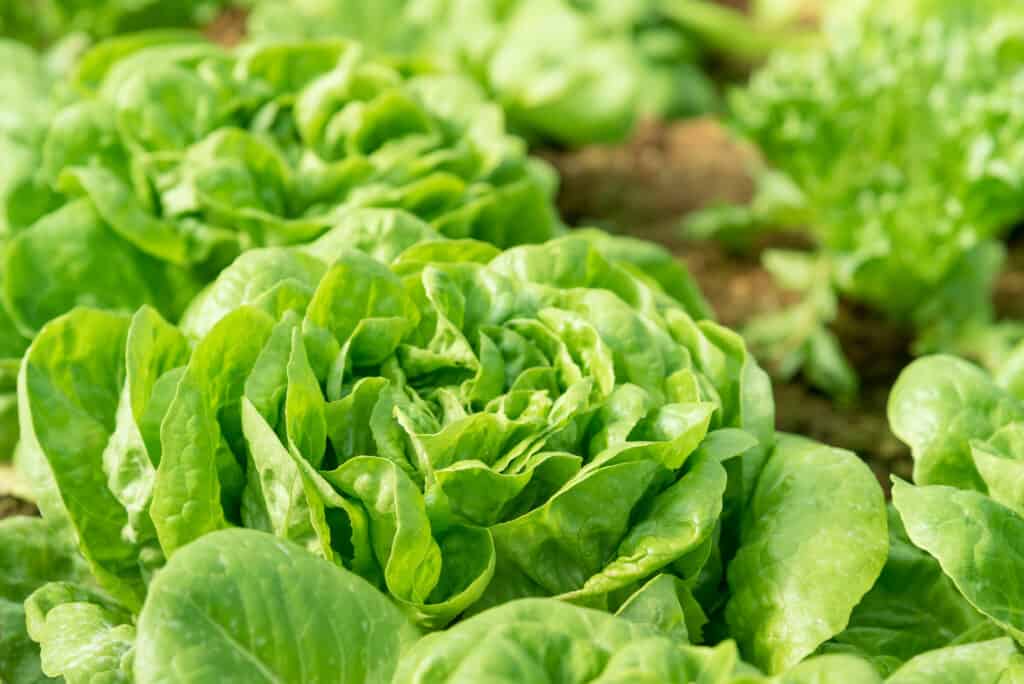
Growing xà lách, or lettuce, at home is relatively easy.
©iStock.com/fotolism_thai
Xà lách, or lettuce, is more than a mere sidekick in dishes. Its mild, slightly sweet flavor is a canvas that can hold up to a wide range of salad dressings. The leaves can also be a refreshing, healthy alternative to taco shells or sandwich bread, further elevating its versatility. This is especially true for those on a low-carb diet. Even when subjected to heat, as in grilling or sautéing, lettuce retains its identity, offering a unique taste perspective that pairs excellently with various ingredients.
Growing xà lách at home is relatively easy, with the plant requiring a cool climate and well-drained, fertile soil. The joy of harvesting your homegrown lettuce, crisp and fresh, adds more appreciation to this humble leafy green.
Packed with vitamins and minerals and high-water content, lettuce promotes hydration and supports overall health. Furthermore, its low-calorie count and high fiber content make it an excellent choice for weight management and maintaining digestive health. For all these reasons, lettuce is the perfect addition to any meal – whether you’re seeking a crunchy addition to your salad, a low-carb wrap, or a satisfyingly fresh harvest from your garden. The wide varieties and the countless ways to enjoy it make lettuce an indispensable part of culinary cultures everywhere.
Xà Lách Xoong (Nasturtium officinale)
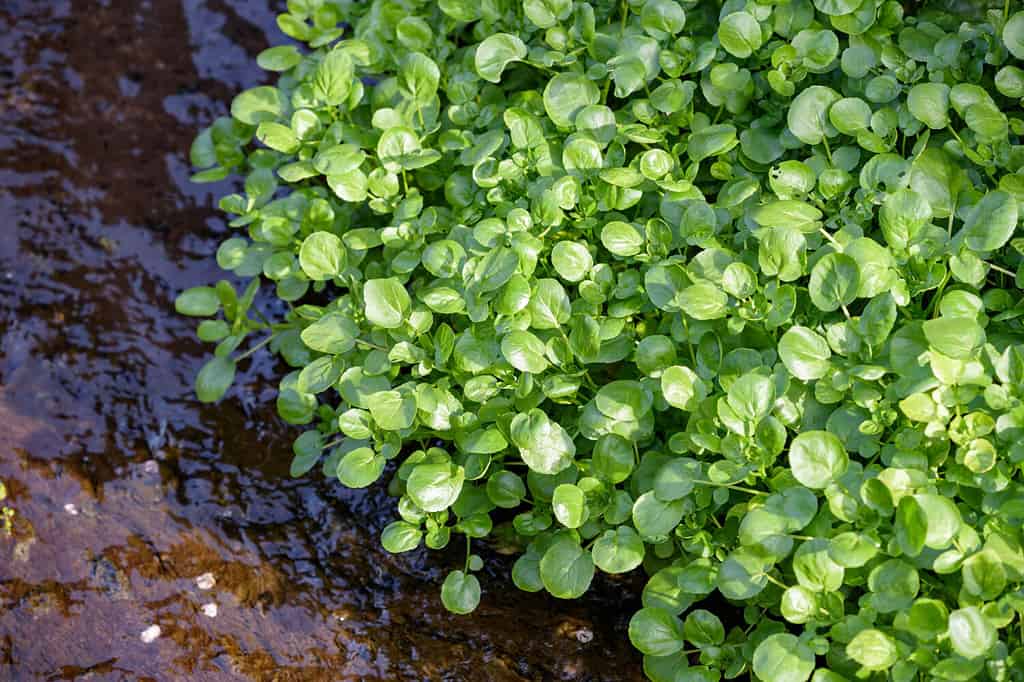
You can turn watercress, or xà lách xoong, into a juice or smoothie.
©Picmin/Shutterstock.com
Xà lách xoong, commonly known as watercress, is a vegetable offering much more than a distinctive taste. Beyond the conventional culinary applications, you can also juice this leafy green for a nutrient-packed drink or blend it into smoothies for a healthful kick. It’s also worth noting that watercress makes an excellent pesto base, introducing a vibrant, peppery twist to the classic Italian recipe. You can also put a unique spin on traditional tea by steeping watercress leaves in hot water. This creates a soothing, nutrient-rich herbal drink.
Watercress can be a great addition to your home garden, offering a fresh supply of this nutrition powerhouse. While it is an aquatic plant, it can thrive in regular garden soil as long as it is consistently moist. Watercress prefers semi-shade but will grow in full sun if the soil remains wet. And generally, it’s grown from cuttings immersed in water. Once the roots develop, you can transfer the plant to a water-filled container or a moist garden bed. In the right conditions, it can spread rapidly, providing a steady supply of fresh, peppery leaves.
Additionally, as a plus, growing watercress in your garden offers environmental benefits. Watercress can help improve water quality by absorbing excess nutrients, thus playing a part in creating a more sustainable home environment.
Xi Yang Cai (Brassica rapa subsp. pekinensis)
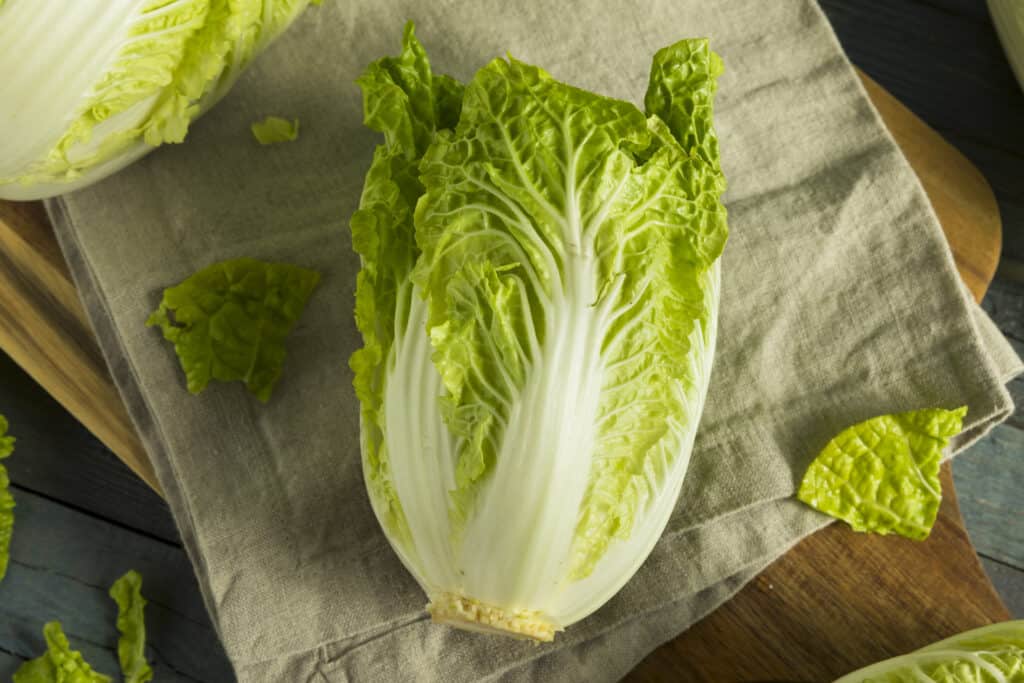
Also known as Napa cabbage, xi yang cai is another vegetable that starts with X
©Brent Hofacker/Shutterstock.com
Xi yang cai, globally recognized as Chinese or Napa cabbage, is a staple leafy green in many Asian cuisines. This unique vegetable boasts oblong leaves that gather tightly into a compact yet plump head. Its pale green leaves gently fade to an almost white hue near the base, giving the plant a gradient effect.
The leaves of the xi yang cai offer a delightful crunch that adds an appealing textural contrast to various dishes. The flavor of this cabbage is distinct; it is sweet with a slight kick and has a more layered taste than regular cabbage.
There are various uses for xi yang cai. It can be consumed raw, adding a refreshing crunch to salads, or pickled and used in traditional dishes like kimchi. When stir-fried, it retains a bit of its crunch, soaking up the flavors of accompanying ingredients in a delightful fusion. Its broad, flexible leaves also make perfect wraps in dishes like moo shu pork.
Xanthosoma Sagittifolium (Xanthosoma Sagittifolium)
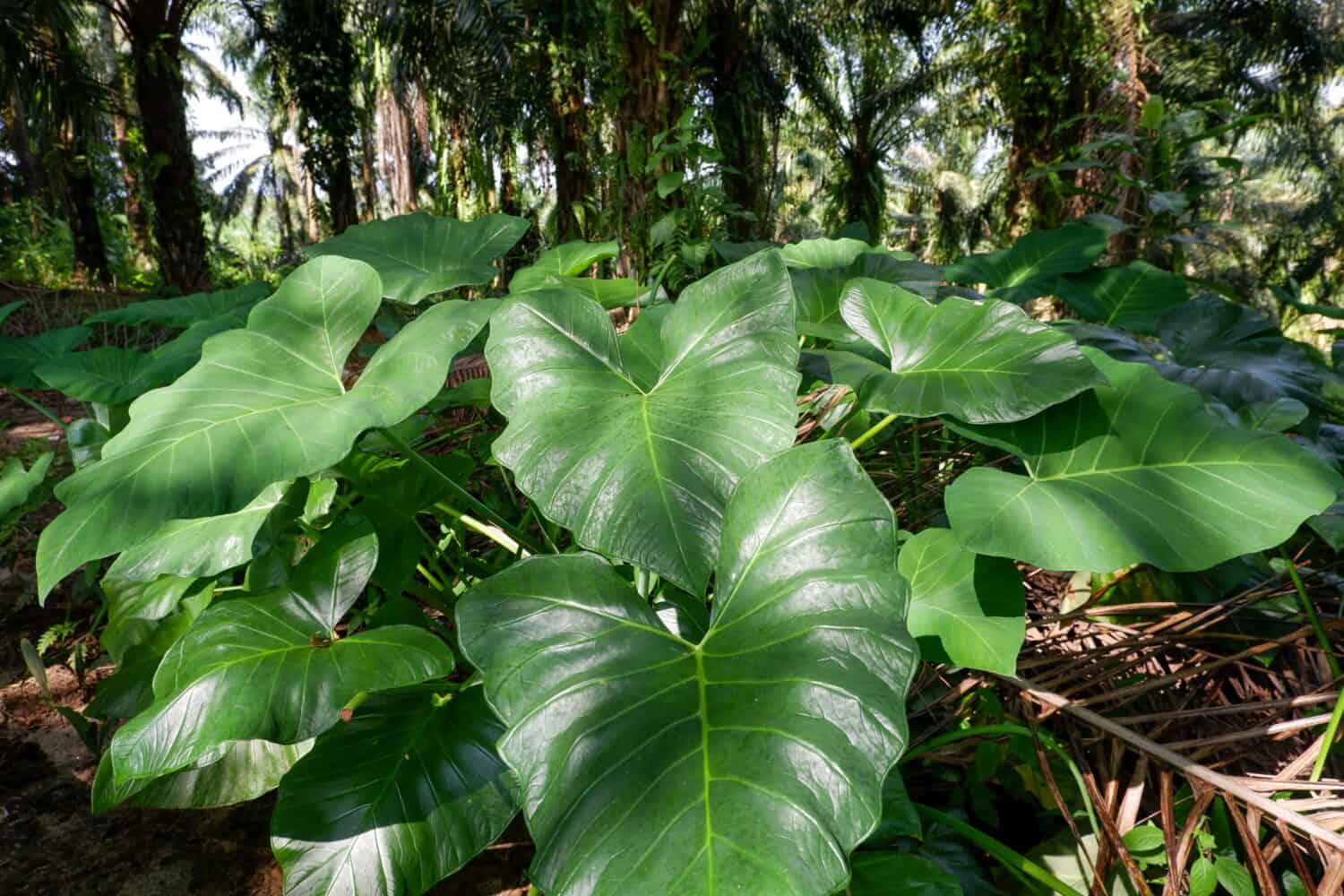
Boil, roast, or fry the tubers of the
Xanthosoma Sagittifolium.
©Raja Sopan Purba/Shutterstock.com
Xanthosoma sagittifolium, or arrowleaf elephant ear or malanga, is a beloved tropical plant cultivated primarily for its substantial, edible tubers and leaves. The tubers have an oblong shape and a rough, brown, or tan exterior, hiding the creamy, white, or yellow flesh within. The flavor profile of malanga is intriguing. It offers a slightly nutty and sweet taste reminiscent of a sweet potato yet distinctively creamier in texture.
Like the universally favored potato, these tubers can be boiled, roasted, or fried, bringing their unique taste and lending a rich, earthy layer to various dishes. The plant’s leaves, similar to arrowheads in shape and large enough to provide shelter like a natural umbrella, also serve as a culinary delight. Cook and consume this vegetable like spinach, offering a nutritious and flavorful green addition to meals.
This versatility, combined with the nutritional benefits of both the tubers and the leaves, makes xanthosoma sagittifolium a cherished component in many tropical cuisines, enhancing the taste and healthfulness of a wide range of dishes.
Xanthosoma Brasiliense (Xanthosoma Brasiliense)

Elephant ear
Xanthosoma brasiliense, recognized Tahitian taro in English, is a culinary staple in many tropical regions. The plant’s edible components consist of large, heart-shaped leaves and its rounded, beige tubers that are also visually similar to potatoes. The leaves have a mild sweetness with a slight tang, creating a refreshing eating experience. In contrast, the tubers boast a starchy consistency with a somewhat nutty flavor that adds depth to their taste profile.
To ensure safety, both leaves and tubers must be properly cooked before consumption to neutralize any calcium oxalate crystals present. As you can cook the xanthosoma brasiliense like spinach and potatoes, it is pretty easy to incorporate it into various dishes. Taioba leaves and tubers are vital ingredients in various Brazilian dishes. People love this root vegetable for its gastronomic versatility and nutritional value, contributing necessary vitamins and minerals to any meal.
Xanthosoma Caracu (Yautia horqueta)

©komkrit Preechachanwate/Shutterstock.com
Xanthosoma caracu, often referred to by some as yautia amarilla or yellow taro, is a tropical plant valued for the versatile and flavorful tubers it produces. These tubers, beneath their rough, brown skin, have a vivid yellow flesh that makes it a colorful addition to any dish. In terms of taste, they deliver a subtly sweet and nutty flavor, with a texture that seamlessly transitions from dense to creamy when cooked. Xanthosoma caracu must be cooked before consumption to effectively neutralize potentially harmful compounds, ensuring its safe for ingestion.
To prepare the vegetable, the tubers are usually peeled, then subjected to various cooking methods, such as boiling, roasting, or frying, depending on the specific requirements of the dish. There are many ways to eat the xanthosoma caracu, echoing the versatility seen in the typical potato or sweet potato. Furthermore, they effortlessly blend into a wide array of cuisines.
The plant is typically propagated from small pieces of the tuber or offsets that the parent plant produces. These are then planted in the soil with the growth points facing upwards. Yellow taro can reach a height of up to 6 feet, and its large, tropical leaves add an attractive aesthetic to any garden.
Xerophyllum Tenax (Xerophyllum Tenax)
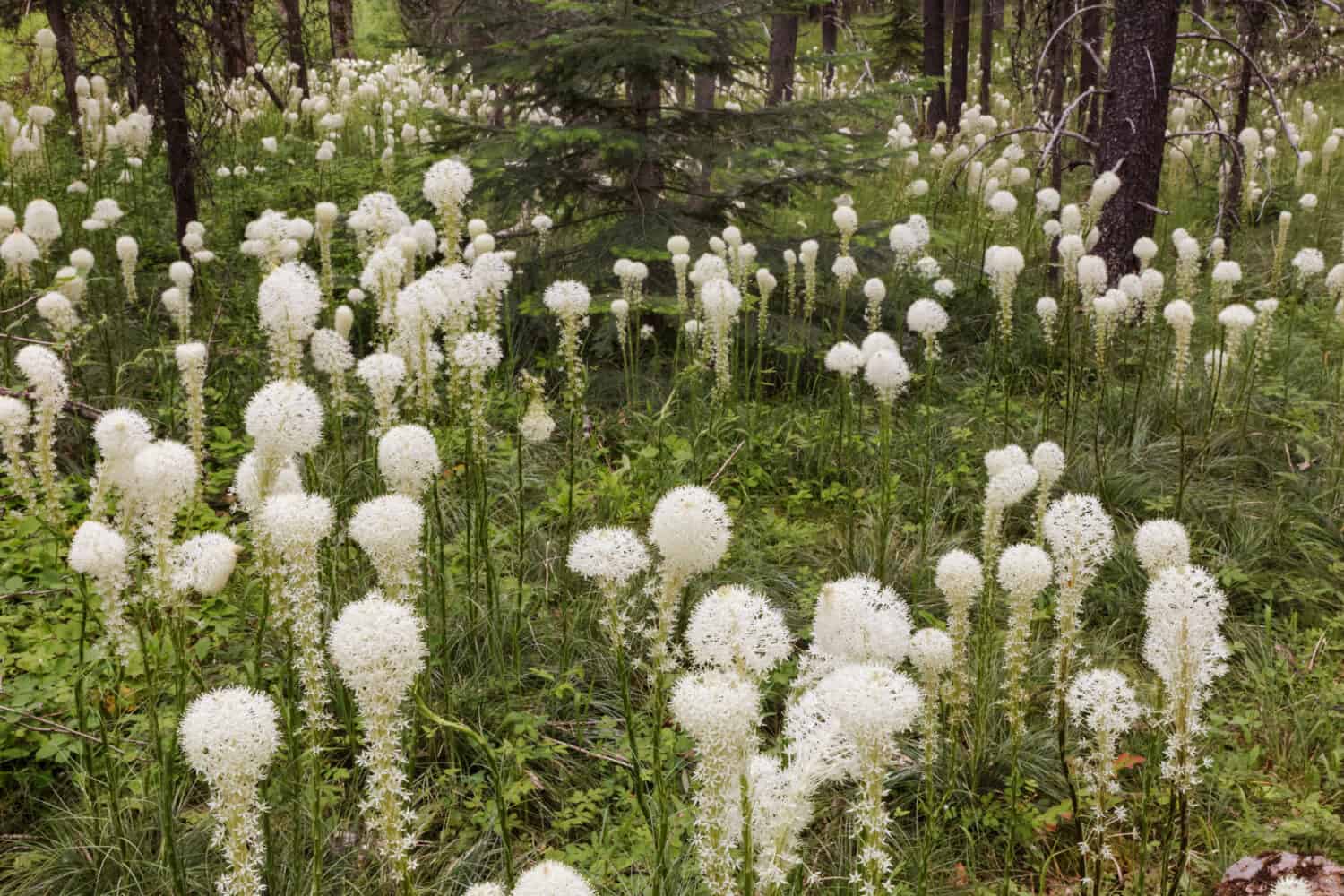
Also called bear grass,
xerophyllum tenaxtastes mild and starchy.
©Danita Delimont/Shutterstock.com
Xerophyllum has been utilized as a food source and for other purposes by indigenous communities. Notably, xerophyllum tenax, commonly called bear grass, is one species within this genus that has found its way into culinary use. This perennial herb boasts an aesthetic appeal with its long, grass-like leaves that cluster into a dense tuft and tall flowering stems with small, white flowers.
Regarding taste and consumption, the edible part of xerophyllum is the base of the stems and the rhizomes (rootstalk), which can be peeled and eaten. Traditionally, these parts were consumed by Native Americans as survival food used sparingly and primarily during times of scarcity. The flavor is mild and starchy, somewhat akin to a potato but with a more fibrous texture.
It should be noted that, like many wild plants, xerophyllum should be prepared with care and proper knowledge. The rhizomes can be cooked much like potatoes, either boiled or roasted. However, they are not a common vegetable in contemporary use due to their tough texture and the plant’s ornamental value. Furthermore, their cultivation as a food source is not widespread. Their usage is more historical and cultural than general culinary application.
While xerophyllum may not be a familiar item in your everyday grocery list, it is certainly a fascinating glimpse into the diverse world of edible plants that start with the letter X.
Summary of Vegetables That Start with X
| Vegetable | Scientific Name | |
|---|---|---|
| 1 | Xi Lan Hua (Broccoli) | Brassica oleracea |
| 2 | Xà Lách (Lettuce) | Lactuca sativa |
| 3 | Xà Lách Xoong (Watercress) | Nasturtium officinale |
| 4 | Xi Yang Cai (Chinese/Napa cabbage) | Brassica rapa subsp. pekinensis |
| 5 | Xanthosoma Sagittifolium (Arrowleaf elephant ear/Malanga) | Xanthosoma sagittifolium |
| 6 | Xanthosoma Brasiliense (Tahitian taro) | Xanthosoma Brasiliense |
| 7 | Xanthosoma Caracu (Yellow taro/Yautia amarilla) | Yautia horqueta |
| 8 | Xerophyllum Tenax (Bear grass) | Xerophyllum tenax |
Thank you for reading! Have some feedback for us? Contact the AZ Animals editorial team.

